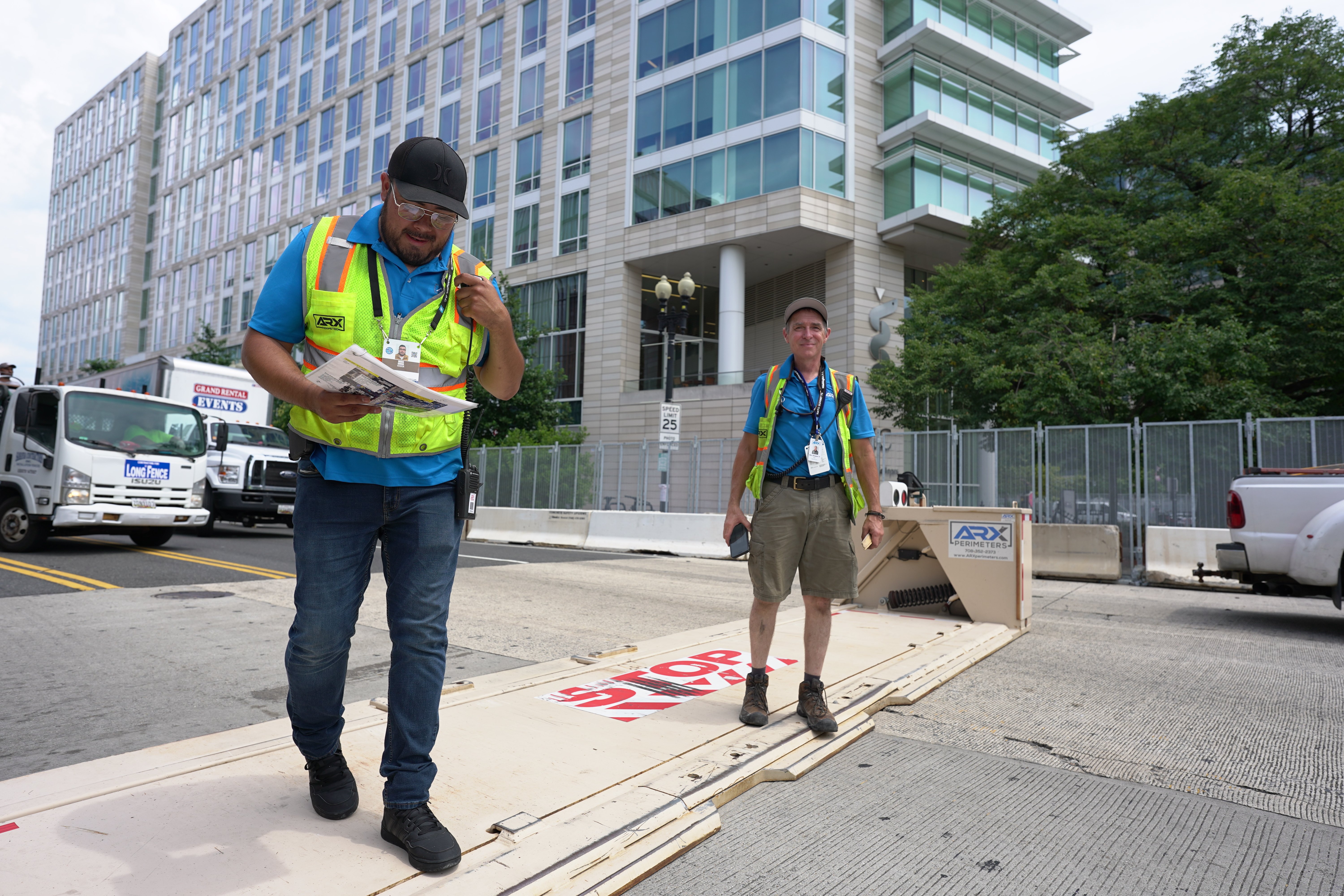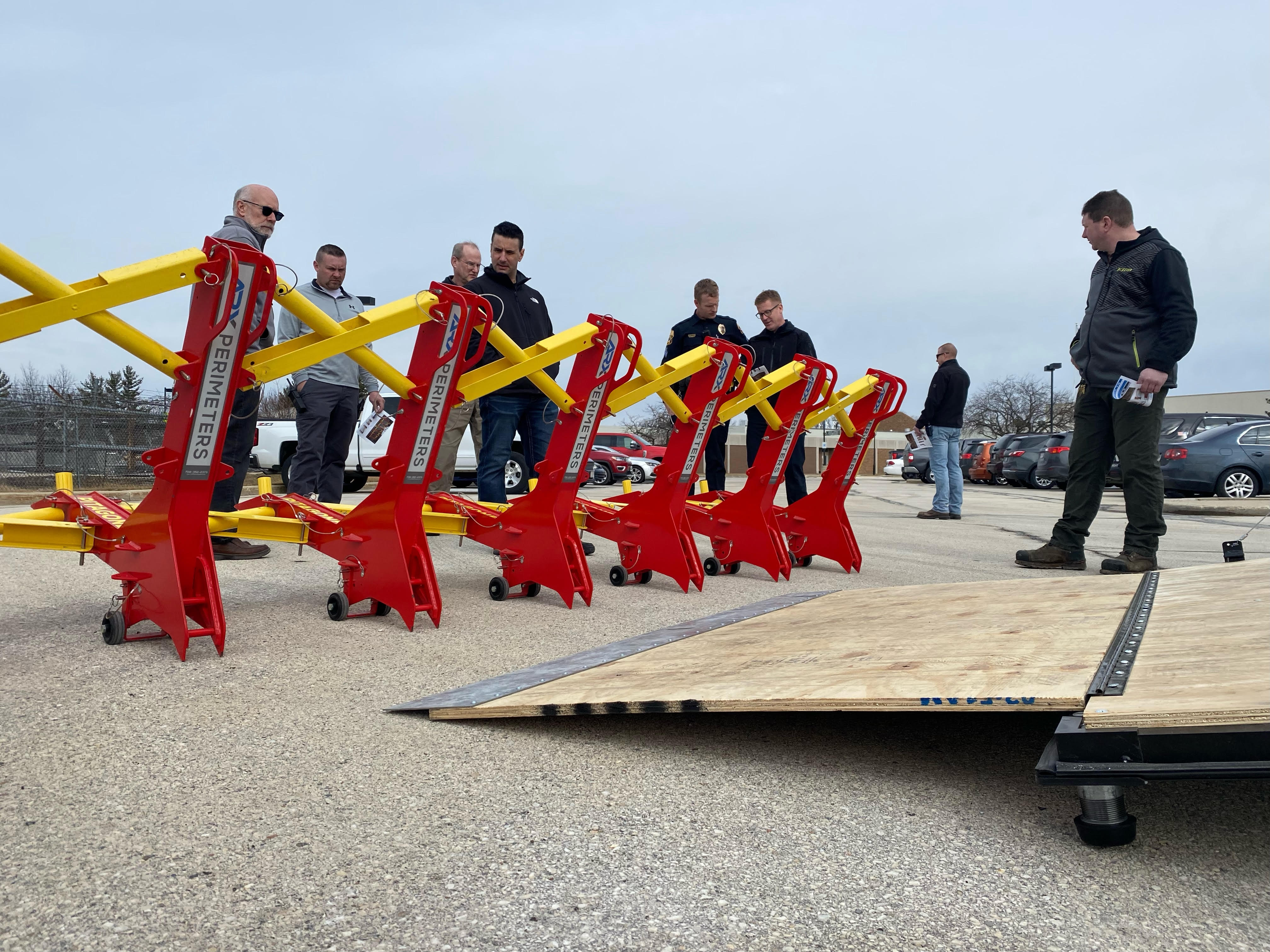When it comes to understanding the capabilities of a vehicle barrier system, you need to understand the crash test and certifications that system holds. Now, there are multiple crash test ratings around the globe and all have different parameters for which they measure the effectiveness of an individual vehicle barrier system.
In this article, we are going to discuss some of the different crash test certifications, how they are conducted, and explain their rating system.
Would you rather watch the video? Click here to jump to the video.
The three we will focus on today are going to be:
What Is The PAS 68?
The PAS 68 stands for Publicly Available Standard. Developed by the British Standards Institute in 2005, this standard became one of the premier standards for hostile vehicle mitigation crash test specifications. A PAS 68 rating is made up of different segments including (numbers, letters, and symbols) stringed together to give a rating.
Each segment denoting specific parameters of the test itself and the vehicle used, including test method, vehicle type, test speed, impact angle, impact penetration and debris dispersion.
PAS 68 Example: V/7500[N3]/48/90.28.1/18.0
The V stands for Vehicle. Meaning this test was performed using a vehicle with a defined mass.
The 7500[N3]. This represents the weight and the type of vehicle performed in the test. Meaning this vehicle weighed approximately 7500 kgs and in the category of N3.
The different types of categories are:
- M1 - a vehicle weighing 1500 kgs
- N1G - a vehicle weighing 2500 kgs
- N1 - a vehicle weighing 3500 kgs
- N2 - a vehicle weighing 7500 kgs
- N3 - a vehicle weighing 7500 kgs up to 30,000 kgs

The next segment is the speed at which the vehicle was traveling. In this example the speed here is represented in kilometers by the number 48 kph or 30 mph.
Next we have the angle and distance of penetration at which the test was conducted. Here we have the number 90 representing the test was conducted at a 90 degree angle. Followed by the number 28.1, meaning the vehicle or load traveled 28.1 meters after impacting the barriers.
Last but not least, we have the number 18.0 which represents the distance at which debris traveled beyond the impact site in meters.
What Is The IWA 14?
This IWA stands for ‘International Workshop Agreement’ and is overseen by the International Organization for Standardization. Amongst many international organizations, including the US Department of State, the IWA 14-1 is considered to be the standard for impact testing.
Like the PAS 68, certifications are granted after successful completion of crash testing and are then given a string of characters to represent the results for a now rated vehicle barrier.
The string is shown the same as with PAS 68.
In the example on the screen V/7500[N3]/48/90:28.1
- V is for vehicle
- 7500 is the weight of the vehicle in kilograms
- [N3] is the category of the vehicle conducted in the test
- 48 is the speed at which the vehicle was traveling at the moment of impact
- 90 is the degree of impact
- 28.1 is the distance the load traveled post impact
There is only one difference in this string. Unlike the PAS 68 the IWA 14 does not contain the distance at which debris traveled post impact.
What is the ASTM?
Recently there was a transition in vehicle crash test ratings from the older standard, K-Ratings, to the new more comprehensive, M-Ratings, by the American Society for Testing and Materials (ASTM). Under ASTM standards, vehicle weights are categorized into several different classifications, each to a specific type of vehicle ranging from small passenger cars to heavy vehicles.
These categories include:
- C-ratings: small passenger car weighing 2,430 lbs
- PU-ratings: pickup truck weighing 5,070 lbs
- M-ratings: medium-duty truck weighing 15,000 lbs
- H-ratings: heavy goods vehicle weighing 65,000 lbs
Here is an example of how a vehicle barrier might be certified:
ASTM: F2656/F2656M-20 PU30/P3
K-Ratings were established by the Department of State under Diplomatic Security (DS) and had penetration ratings of L3 to L1 in 1985. In the 2003 revision they removed L-penetration rating to only accept less than 1 meter of penetration.
A barrier's certification under the K-Rating system was based on preventing the vehicle's front bumper from penetrating more than 50 feet past the barrier.
The new M-Ratings have expanded this protocol:
Payload Penetration: M-Ratings factor in how far the actual payload of the vehicle travels beyond the barrier, offering a more realistic understanding of a barrier's effectiveness in halting the most critical part of the vehicle.
Penetration Allowance: Any test traveling beyond 98.41 does not get a rating.
M-Ratings reflect an updated understanding of security needs in today's world, where threats can vary widely in terms of vehicle size and speed.
These vehicle crash test ratings allow for a more calculated approach to vehicle barrier design and deployment, ensuring that vehicle barriers are tested and certified against the most relevant and severe vehicle impact scenarios.
Understanding these vehicle weights and corresponding crash test ratings, city planners, law enforcement, and security personnel can make more informed decisions about which barriers to deploy in when shutting down streets or protecting other venues and events.
Conclusion
We hope you have found this information useful and if you have any questions about crash rated vehicle barriers, reach out to our team at info@arxperimeters.com or visit our vehicle barrier catalog by visiting www.vehiclebarriers.com. If you'd like to learn more about hostile vehicle mitigation, read our article about it here.
Watch the video on YouTube
Related articles

From Perimeter Protection To Complete Site Security: How ARX Became The Leader
Carson Schenk | Aug 12, 2025 8:11:15 AM

What To Look For In A Hostile Vehicle Mitigation System | Vehicle Barriers
Chase Tobin | Feb 26, 2025 9:08:25 AM



